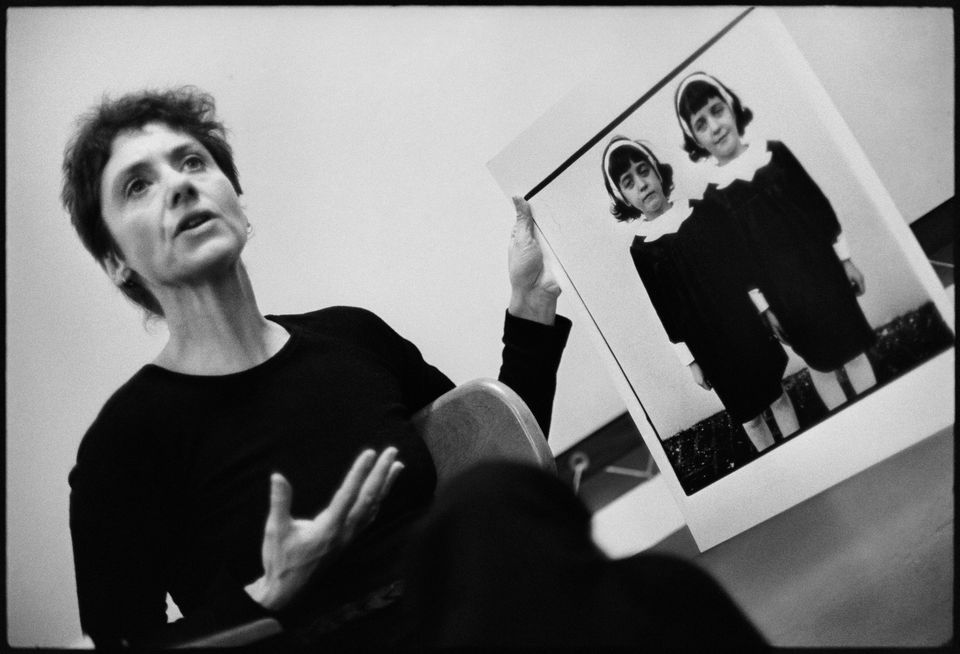
Diane Arbus with her photograph Identical twins, Roselle, N.J. 1966, during a lecture at the Rhode Island School of Design in 1970. © Stephen A. Frank

In 1972, Diane Arbus became the first photographer to have her work exhibited at the Venice Biennale. Organized by Walter Hopps, director of the Corcoran Gallery, on behalf of The National Collection of Fine Arts (now the Smithsonian American Art Museum), the exhibition in the American Pavilion was certainly multifaceted. The New York Times described the selection of artists as “open and pluralistic,” pointing to the wide variety of art styles and mediums as being a hallmark of American art’s broad progression. The Times review continued: “The most audacious thing… is the inclusion of Diane Arbus, who, as far as anyone can remember, is the first photographer to be exhibited at the Biennale.” These pivotal works will be featured in the Smithsonian American Art Museum’s exhibition, Diane Arbus: a box of ten photographs, opening at SAAM on Friday, April 6, and remaining on view through January 21, 2019.
But what does it mean to be “exhibited at the Biennale”? Why was this the pivotal moment in Arbus’ posthumous career?
The first official Venice Biennale was held in 1895. In 1910, great European artists such as Gustav Klimt, Gustave Courbet, and Pierre-Auguste Renoir had entire exhibition rooms dedicated to their work. By 1914 there were pavilions dedicated to the art of Belgium, Hungary, Germany, Great Britain, France, and Russia. Although annual biennales were canceled during the First and Second World Wars, the fair persisted—and came to be known as the epicenter of modern and contemporary art as well as music and film. The Biennale is credited with the validation of Pop Art as a mainstream art movement; in 1964, the fair’s grand prize was awarded to the American artist Robert Rauschenberg.
Although she had passed away in 1971, Diane Arbus’ photographs were notable when seen in 1972; they possessed an intimate strangeness. As the first American photographer to be featured, her work opened the door for more photographers to be seen on the same stage as the great artists of their time. Because the Biennale has always had a reputation for bringing the newest and most engaging works of contemporary art into an international spotlight, Arbus’ presence was a turning point in the progression of photography as a form of fine art.
To be exhibited at the Biennale is to be presented to the world as a visionary of your national artistic culture. I believe that the beautiful, odd nature of Arbus’ works represent the possibilities of photography to capture the essence of life in all of its strange, nuanced glory, but I also think that they show an important aspect of what it means to be American—that we have always championed innovation and eccentricity alongside tradition.
On Friday April 6th from 4–7 p.m., the museum celebrates the opening of Diane Arbus: A box of ten photographs with a two-part public program [SOLD OUT]. It begins with “A Slideshow and Talk by Diane Arbus,” a rare showing of an illustrated audio recording from 1970, in which Arbus speaks about photography using her own work as well as other photographs, snapshots, and clippings from her collection. The slide show is followed by a panel discussion about Arbus, the magazine era, and A box of ten photographs. The panel is comprised of photographers who knew Arbus and other experts who have devoted decades to the study and understanding of her work.


















